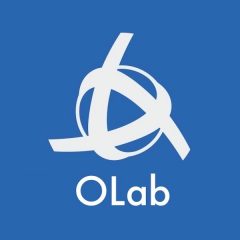OLab has moved on significantly from the early days of virtual patients and now be employed in a wide variety of learning designs. Many early virtual patients were quite linear, sticking to the rather rigid HEIDR (history, exam, investigations, diagnosis, Rx) format seen in undergrad medical case presentations. Of course, you can still do this with OLab but what about some more interesting designs?
OLab maps do not have to be linear at all. Even from its earliest versions, OLab supports complex branching scenarios. See Branching case examples for more on this.
We have come across all sorts of different ways of using OpenLabyrinth in educational projects and research. The platform is not always pretty in its interface but it is amazingly flexible. We are interested in hearing about the different Learning Designs that other groups may have employed and in sharing how the functions of OpenLabyrinth can be improved to support such designs.
In the area of mixed modality simulation, we have found OpenLabyrinth to be particularly useful in pulling different types of activities together, forming a sort of contextual glue to hold things together. For example, we have been successful in using virtual patients to bookend more sophisticated simulation activities. We like to quote ‘How does Disney do it?’ as an illustration of this – someday we will write this up more formally.
Bookending, as we call it, is where you use virtual patient cases before and after another simulation modality. For example, instead of standing around an expensive high-fidelity human patient simulator mannequin, discussing things like what equipment you would need or what roles to assign to various team members, why not use a virtual patient so that team members can be introduced to their context and what is coming up?
This way you can use a cheap, easily accessible modality to get some of the prep work done. Think about it. This is the way that Disney gets you into the zone – fully engaged with what is to come. They use cheap video loops, posters and static artefacts to gradually introduce you to the adventure. The actual amount of time that you spend on the full-motion simulator is only about 90 seconds. But you are pumped when you get there, with adrenal glands secreting nicely.
Similarly, during the debrief. Is it really worth standing around that mannequin? Time to make room for the next incoming group. Use a virtual patient case to pose some follow up questions to the player or the group. Provide them with some additional materials to consider – they can also access this same material later at home.
Lifeboat scenarios – now that we have Counters that can be accessed across multiple cases or multiple players, you can have several people compete with each other on different machines.
The concept behind the Lifeboat scenario is that the skipper of the lifeboat has to balance out scarce resources, such as first aid items, fluids, food, between a number of sick and needy cases. If you allocate too much saline to one case, you will not have enough to resuscitate another case. Sometimes, the choices you have to make will be stressful, with no easy way out. But better to make these choices in an imaginary situation than for real.
These types of scenarios, where you are balancing needs and resources, are particularly useful for triage type decisions.
Flipped classrooms – these work quite well for undergraduates where you can mandate that they do their homework before they come to class to discuss the problems and challenges. But good luck in getting established practitioners to do this.
Most will turn up to the session with all sorts of rationalizations about being too busy or being called away to other things. In our DynIA project, we found that the trick was to present the homework as introductory cases to solve, while including reminders about the key concepts that will be discussed in the session.
Those who came to the session unprepared the first time found that they were quite disadvantaged in the ensuing discussions. This was reinforced by the facilitators not going back over the key points again during the session, but assuming that all were familiar with them. In subsequent sessions, there was a much higher number who came prepared to tackle the really juicy issues that arose during the session webinar discussions.
Reference materials – there are many different software tools out there that can provide linked web pages. In fact, you are currently using one of the commonest, the simple web site. WordPress, and other content management systems, do a very nice job of providing easily linkable resources.
Wikis are another very simple and easily editable set of connected pages. In our cases, we use TiddlyWiki, a lovely little single file wiki system that is all self-contained, to provide wiki features within our OpenLabyrinth cases.
But the big advantage that OpenLabyrinth provides is that it tracks what the user does in great detail. Every click, choice, response to a question, branch in a pathway, is captured in the underlying database, along with precise timestamps of when it happened.
This activity tracking provides great power in assessing what your learners do, how your cases perform, or how your teachers facilitate. This is particulary useful for reference materials because you can then tune your resources to adapt to their usage and what your users need.

